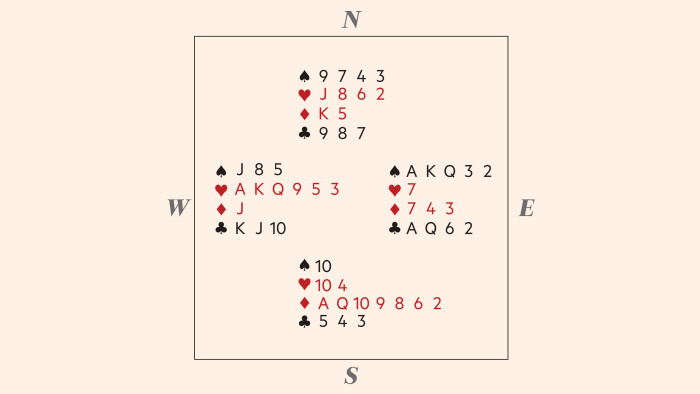When showing shortage in partner’s suit is essential for reaching slam

Roula Khalaf, Editor of the FT, selects her favourite stories in this weekly newsletter.
The third hand of the first event of the year featured another slam. This time, the problem seemed to be bidding it, but there are two perfectly reasonable roads to the best contract.
Bidding
Dealer: South
E/W Game
East’s 3S bid was forcing, and West correctly rebid 4D. This is a Splinter, showing three-card support or better for spades and a singleton (or, rarely, a void) in the opponents’ suit. Even if Splinters are not part of your regular system, any bid of the opposition’s suit at the four-level (or jump-bid in their suit) is, in effect, a Splinter bid, indicating mild slam interest. East should now use Blackwood or bid 6S but, instead, he cue-bid 5C; West signed off, and so did East.
At another table, a different bid was used by one player. Instead of re-bidding 4D, West merely raised to 4S. East persevered, deciding to bid 5S. What does that mean? Sadly, West did not know and passed.
Most experts play a free bid to five of a major to mean: I have two quick losers in the key suit (either one bid by the opposition or, in an uncontested auction, the only unbid suit). If you can help, there will be a slam. With a protected king, or a singleton, you bid six of the suit; with the ace or void, you cue-bid the suit. Here, if West held A♦, 7NT would be cold.
Read Paul’s previous Bridge columns at ft.com/bridge-card-game
Comments